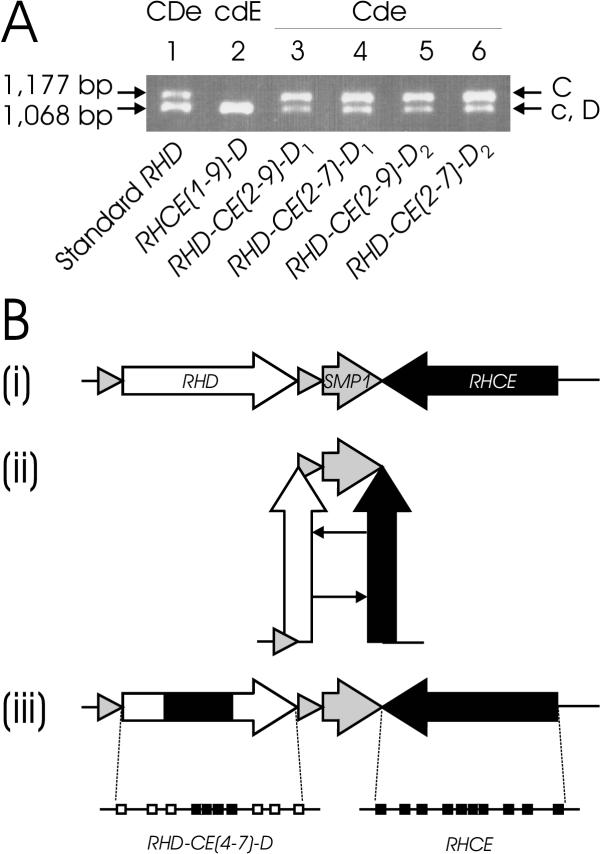Figure 6.
Gene conversion in cis. Panel A: Origin of the RHCE gene segments. The allele origin of the RHCE segments in the RHD gene was analyzed by a PCR length polymorphism in intron 2 [31,43]. The 1,177 bp product is specific for the C allele of RHCE, the 1,068 bp product for the c allele of RHCE and for RHD. The CcDee control shows a strong band at the c/D position and a weaker band at the C position (lane 1). The cE associated RHCE(1-9)-D hybrid allele lacks the C band (lane 2), indicating that the intron 2 of the hybrid allele derives from c. In contrast, all Ce associated hybrid alleles involving intron 2 show a strong C band and a weaker c/D band (lanes 3 to 6), indicating that the introns 2 of those hybrids derive from C. Panel B: Proposed mechanism of gene conversion in cis. (i) The RHD and RHCE genes are inversely orientated [7] as typical for clustered genes. (ii) A putative hairpin formation of the chromosome allows the close proximity of homologous segments in identical orientation. This structural feature is instrumental for gene conversion events in cis. (iii) Resolving the hairpin yields an RHD-CE-D hybrid gene structure, many of which have been observed to date at the RH gene locus. As an example, the RHD-CE(4-7)-D hybrid exon structure is shown. Symbols are according to Fig. 1.

